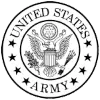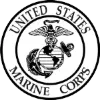





Available Civil 3D Instructor-Led Courses
Available Civil 3D On-Demand Courses
Virtual Live Instructor
Financing Available
Free Repeat
We offer private group training services for organizations looking to upskill their team members with a live-instructor.
Training options include:
Learn more about how Private Group Training from Business Computer Skills can help your team.
Civil 3D FAQ
What is Civil 3D
Autodesk Civil 3D is a civil engineering design and documentation software that supports Building Information Modeling (BIM) workflows. It's widely used by civil engineers, designers, and drafters to plan, design, and manage civil engineering projects. Civil 3D is primarily aimed at projects involving infrastructure, such as roads, highways, railroads, land development, water and sewer systems, storm water management, and environmental management.
Business Computer Skills offers Inventor training classes nationwide and online.
Key Features and Functionality of Autodesk Civil 3D:
1. Dynamic Model-Based Design
- BIM Integration: Civil 3D supports BIM workflows, meaning it creates intelligent, dynamic 3D models that are interrelated and update automatically when changes are made. If you change one part of the model (e.g., a roadway alignment), associated parts (such as profiles, cross-sections, and volume calculations) automatically adjust.
- Data Management: The software allows you to organize project data using surfaces, alignments, corridors, and networks. Each of these objects can be connected to create a comprehensive project model.
2. Terrain Modeling
- Surface Creation and Analysis: Civil 3D allows the creation of digital terrain models (DTMs) or surfaces from various data sources, such as survey data, point clouds, or LiDAR data. Surfaces are used to represent the existing and proposed ground conditions and can be analyzed for volumes, slopes, contours, and more.
- Grading Tools: Users can generate grading solutions to model site topography, drainage paths, or complex earthwork designs for land development projects.
3. Alignment and Profile Design
- Horizontal Alignments: Civil 3D enables the design of horizontal alignments, such as road centerlines, railway tracks, or pipe networks. These alignments can be constrained by curves, tangents, and transitions, and the software provides tools for complex curve design.
- Vertical Alignments (Profiles): Users can create profiles that represent the vertical aspect of an alignment. For instance, in a road design, a profile would show the changes in elevation over the length of the road, enabling the design of cuts, fills, and slopes.
4. Corridor Modeling
- Road and Highway Design: Civil 3D excels in creating corridor models, which are 3D representations of linear infrastructure (such as roads and highways). A corridor is generated by applying a typical cross-section (assembly) along a defined alignment and profile. These corridors adapt dynamically to changes in the alignment or profile.
- Intersections and Roundabouts: The software includes tools to automate the design of complex intersections, roundabouts, and other road configurations. These intersections update automatically when changes are made to the parent alignments.
5. Pipe Network Design
- Storm and Sanitary Sewer Networks: Civil 3D allows users to design and analyze stormwater and sanitary sewer systems. You can create both gravity and pressure pipe networks, set pipe sizes and elevations, and analyze flow based on design criteria.
- Hydraulic and Hydrologic Analysis: It integrates with external analysis tools like Autodesk Storm and Sanitary Analysis (SSA) for hydrological studies and stormwater management. This enables engineers to simulate and analyze drainage patterns, runoff, and capacity in the network.
6. Survey Data Management
- Survey Database: Civil 3D supports the collection and management of survey data, including points, traverses, and breaklines. It integrates with survey instruments and allows field-to-finish workflows.
- Topographic Maps: Surveyors can use the software to convert raw survey data into topographic surfaces, which can then be used to design or calculate earthwork quantities.
7. Quantity Takeoffs and Cost Estimation
- Earthwork Volumes: Civil 3D provides tools to calculate the cut-and-fill volumes needed for earthworks. These calculations can be dynamically linked to surface changes, ensuring accuracy when the design evolves.
- Material Quantities: Corridor modeling in Civil 3D can be used to extract quantities of materials like asphalt, concrete, and base layers. These quantities can be linked with costing data for accurate project estimates.
8. Plan Production and Documentation
- Dynamic Cross-Sections and Profiles: The software automatically generates cross-sections and profiles based on the 3D model, and these views update when changes are made to the design.
- Sheet Set Creation: Civil 3D has tools for automating the creation of plan and profile sheets, including road layouts, pipe networks, and grading plans. This is helpful for reducing manual drafting work and ensuring consistency across the project.
- Annotation and Labeling: Intelligent annotation tools ensure that labels (for contours, profiles, alignments, etc.) are dynamically linked to the objects they reference. Changes in the design update the labels automatically.
9. Collaboration and Data Sharing
- Civil 3D and AutoCAD Integration: Civil 3D is built on top of AutoCAD, so it includes all the drafting and design tools of AutoCAD, making it familiar to many users. Civil 3D objects like surfaces, alignments, and profiles can be displayed in 2D AutoCAD views.
- Data Shortcuts: Teams can work collaboratively on large projects by using data shortcuts. This allows team members to reference critical project data (like alignments or surfaces) without needing to work in the same drawing file.
- Cloud Integration: Civil 3D integrates with Autodeskís cloud services, enabling collaboration across teams and stakeholders in different locations. This supports a connected BIM workflow, allowing real-time data exchange between project partners.
10. Analysis and Simulation
- Stormwater Management: Civil 3D provides drainage design tools to handle stormwater runoff, pond design, and pipe network analysis. It includes the ability to model water flow and pressure through storm and sanitary sewers.
- Roadway Analysis: Tools for superelevation calculation, lane widening, and road design evaluation are included. The software can perform design checks to ensure roadways meet design criteria for safety and efficiency.
Typical Uses of Autodesk Civil 3D:
- Roads and Highways: Design and modeling of roads, including lane configurations, curbs, gutters, intersections, and signage.
- Land Development: Subdivision planning, grading design, utility placement, and stormwater management for residential or commercial projects.
- Railroads: Civil 3D is used to design railway alignments, profiles, and corridors for rail infrastructure.
- Utilities and Infrastructure: The software handles the design of underground utilities, water and sewer systems, and storm drainage.
- Environmental Projects: Civil 3D supports projects like flood control, environmental restoration, and land reclamation by providing terrain modeling and hydrologic tools.
Integration with Other Autodesk Products:
- Revit: Integration with Autodesk Revit for building and infrastructure projects that need both architectural and civil designs to coexist, such as when designing roads and utilities alongside buildings.
- InfraWorks: InfraWorks is used for early-stage, high-level conceptual design and analysis. Civil 3D can import and refine these conceptual designs into detailed construction models.
- Navisworks: Civil 3D data can be integrated with Navisworks for 4D simulation, clash detection, and project management.
Benefits of Using Civil 3D:
- Improved Efficiency: Automating many design tasks helps reduce errors and speeds up project delivery.
- Real-Time Updates: Dynamic links between project elements mean that when changes are made in one part of the design, all related parts are updated automatically.
- Accuracy and Precision: Civil 3Dís powerful modeling tools allow for accurate calculations of quantities, volumes, and design elements.
- BIM Collaboration: Supports collaborative workflows across disciplines (e.g., structural, architectural, environmental, and civil), making it easier to coordinate designs.
In summary, Autodesk Civil 3D is a comprehensive solution for civil engineering design, offering advanced tools for terrain modeling, alignment design, pipe networks, corridor modeling, and more. Its integration with BIM workflows makes it highly effective for managing complex infrastructure projects, from planning to construction.
In 2024, Autodesk offers several certification paths for Autodesk Civil 3D, primarily aimed at professionals in civil engineering and infrastructure design:
- Autodesk Certified User (ACU): This entry-level certification is intended for students and beginners. It validates foundational skills in Autodesk Civil 3D, such as basic workflows and tools, making it a good starting point for those new to the software.
- Autodesk Certified Professional (ACP) - Civil 3D for Infrastructure Design: This is a more advanced certification that demonstrates your proficiency in handling complex infrastructure projects. The exam covers critical Civil 3D skills such as working with points, parcels, surfaces, alignments, profiles, corridors, and pipe networks. This certification is designed for professionals with experience and those who can solve complex workflow challenges.
Both certifications are valuable in showcasing your abilities to potential employers, helping you stand out in a competitive market. The certifications are typically valid for 2 to 3 years, after which you would need to retake the exam to maintain your certification.
For more information, visit the official Autodesk certification page here.
Jobs that Use Autodesk Civil 3D
1. Civil Engineer
- Responsibilities: Design and oversee infrastructure projects such as roads, highways, bridges, and stormwater management systems.
- Civil 3D Usage: Engineers use Civil 3D for designing, drafting, and creating 3D models for projects.
2. Transportation Engineer
- Responsibilities: Plan, design, and manage transportation systems such as highways, railways, airports, and public transit.
- Civil 3D Usage: Used for designing roadway alignments, grading, and analyzing transportation networks.
3. Land Development Engineer
- Responsibilities: Design residential, commercial, and industrial land development projects including grading, drainage, and utility systems.
- Civil 3D Usage: Employed for site grading, parcel creation, and planning road layouts.
4. Surveyor
- Responsibilities: Measure land areas, distances, and angles to support construction and development projects.
- Civil 3D Usage: Surveyors use Civil 3D for importing survey data, creating terrain models, and plotting contours.
5. Drafter/Designer
- Responsibilities: Assist civil engineers by creating detailed technical drawings, plans, and schematics for infrastructure projects.
- Civil 3D Usage: Used for preparing construction documentation and detailed plans.
6. Water Resources Engineer
- Responsibilities: Design and analyze systems related to water supply, wastewater, drainage, and flood control.
- Civil 3D Usage: Helpful for designing drainage systems, stormwater management, and analyzing hydraulic networks.
7. Geotechnical Engineer
- Responsibilities: Design foundations, earthworks, and retaining structures.
- Civil 3D Usage: Used for visualizing ground conditions and designing earthworks.
8. Environmental Engineer
- Responsibilities: Design solutions for pollution control, waste management, and remediation of contaminated sites.
- Civil 3D Usage: Used for environmental site design, grading, and drainage analysis.
9. Urban Planner
- Responsibilities: Plan and design urban spaces, infrastructure, and land use while considering environmental and community factors.
- Civil 3D Usage: Helps with terrain analysis, infrastructure design, and planning land use patterns.
10. Construction Manager
- Responsibilities: Oversee the construction of infrastructure projects, ensuring they meet design specifications, budgets, and schedules.
- Civil 3D Usage: Used for reviewing designs, tracking project progress, and visualizing construction phases.
11. GIS Analyst
- Responsibilities: Analyze and manage spatial data to support infrastructure planning and development.
- Civil 3D Usage: Often integrates with GIS software for creating and analyzing geospatial data in civil projects.
We offer live-instructor group training classes for your team.
Upskill your team from the comfort of your office or online.
Benefits of Group Training Include:
- Experienced Professional Instructor Trains Your Team
- Content Focused On Your Team's Needs
- Convenient Scheduling and Class Setup
- Significant Per/Student Cost Savings
- Online, On-Site and Blended Options Available
New Orleans Location FAQ
New Orleans is an interesting place. Here is some information to help you learn more about New Orleans
Ten interesting facts about New Orleans, LA
- New Orleans is the birthplace of jazz and has a vibrant music history; (N/A).
- The city is renowned for its distinctive Creole and Cajun cuisines; (N/A).
- New Orleans hosts the world-famous Mardi Gras festival each year; (N/A).
- Its French Quarter is one of the oldest neighborhoods in the United States; (N/A).
- The city has a rich multicultural heritage influenced by French, Spanish, African, and Caribbean traditions; (N/A).
- New Orleans is known for its elaborate ironwork balconies and historic architecture; (N/A).
- Voodoo culture and folklore are an intrinsic part of the city's mystique; (N/A).
- The Mississippi River plays a key role in its economic and cultural life; (N/A).
- New Orleans is celebrated for its art, literature, and bohemian lifestyle; (N/A).
- Resilience and community spirit shine through despite past natural disasters; (N/A).
Ten Fun things to do in New Orleans, LA
- French Quarter Walking Tour - Explore historic streets and vibrant culture; Address: 1 Royal St; Distance: 0.8 mi.
- Jackson Square - Iconic plaza filled with artists and street performers; Address: 701 Decatur St; Distance: 0.5 mi.
- Steamboat Natchez Cruise - Enjoy a scenic cruise along the Mississippi River; Address: 150 Riverfront; Distance: 0.9 mi.
- New Orleans Museum of Art - Extensive art collections in a beautiful park setting; Address: 1 N. Carrollton Ave; Distance: 1.2 mi.
- Crescent City Park - A relaxing green space with city and river views; Address: 500 Park Ave; Distance: 0.7 mi.
- Garden District Tour - Discover stunning mansions and historic cemeteries; Address: 300 Garden St; Distance: 1.0 mi.
- Frenchmen Street Live Music - Experience authentic local jazz and blues; Address: 101 Frenchmen St; Distance: 0.6 mi.
- City Park - One of the nation's largest urban parks with art and nature; Address: 200 City Park Ave; Distance: 1.1 mi.
- Local Culinary Tour - Sample iconic New Orleans dishes on a guided food tour; Address: 400 Culinary Rd; Distance: 0.8 mi.
- Ste. Louis Cathedral Visit - Admire the architecture of this famous landmark; Address: 615 Pere Antoine St; Distance: 0.4 mi.
Ten Restaurants near 1100 Poydras Street, Suite 2900, Energy Center Building, New Orleans, LA 70163
- Crescent Bistro - Upscale dining featuring modern Cajun cuisine; Address: 1110 Poydras St; Distance: 0.1 mi.
- French Quarter Feast - Classic Creole dishes in an elegant setting; Address: 1095 Royal St; Distance: 0.2 mi.
- Bayou Kitchen - Fresh seafood and local specialties; Address: 1120 Bayou Ln; Distance: 0.2 mi.
- NOLA Nosh - Innovative twists on traditional New Orleans fare; Address: 1105 NOLA Blvd; Distance: 0.1 mi.
- Energy Eats - Contemporary dishes with bold flavors; Address: 1115 Energy Ct; Distance: 0.2 mi.
- Jazz & Dine - Enjoy live jazz with every meal; Address: 1090 Music Ave; Distance: 0.3 mi.
- Cafe du Poydras - Intimate cafe serving local coffee and bites; Address: 1102 Poydras St; Distance: 0.1 mi.
- Vieux Carre Kitchen - A taste of classic New Orleans in a modern space; Address: 1125 Vieux Carre; Distance: 0.3 mi.
- Riverfront Grill - Dine with scenic views of the Mississippi; Address: 1130 River Rd; Distance: 0.4 mi.
- Creole Corner - Traditional recipes served with local flair; Address: 1108 Creole Ct; Distance: 0.2 mi.
Ten Hotels near 1100 Poydras Street, Suite 2900, Energy Center Building, New Orleans, LA 70163
- Energy Center Hotel - Upscale accommodations in the heart of the city; Address: 1115 Poydras St; Distance: 0.1 mi.
- French Quarter Suites - Boutique hotel steps from historic sites; Address: 1090 Royal St; Distance: 0.2 mi.
- Riverfront Inn - Modern rooms with views of the Mississippi; Address: 1120 River Rd; Distance: 0.2 mi.
- Crescent City Lodge - Elegant lodging with a touch of local charm; Address: 1105 Crescent Ct; Distance: 0.1 mi.
- NOLA Grand - Luxurious accommodations with full-service amenities; Address: 1110 Grand Ave; Distance: 0.3 mi.
- Historic Quarter Hotel - Experience classic New Orleans hospitality; Address: 1095 History Ln; Distance: 0.2 mi.
- Cityscape Suites - Contemporary style with all modern comforts; Address: 1125 Cityscape Blvd; Distance: 0.3 mi.
- Jazz Inn - Boutique rooms infused with local musical heritage; Address: 1102 Jazz St; Distance: 0.1 mi.
- Vieux Carre Retreat - A peaceful escape in the heart of the French Quarter; Address: 1118 Vieux Carre; Distance: 0.2 mi.
- Bayou Bed & Breakfast - Charming B&B with authentic New Orleans style; Address: 1108 Bayou Ct; Distance: 0.1 mi.
Below is a list of local libraries in the area that may also provide computer training near New Orleans, Louisiana:
Central City Branch
2405 Jackson Avenue Bldg C Room 235
New Orleans, LA 70113
504-596-3110
Central City Branch
Rosa F. Keller Branch
4300 South Broad Street
New Orleans, LA 70125
504-596-2660
Rosa F. Keller Branch
Childrens Resource Center
913 Jackson Avenue
New Orleans, LA 70115
504-596-2628
Childrens Resource Center
Nix Branch
1401 South Carrollton Avenue
New Orleans, LA 70118
504-596-2630
Nix Branch
Algiers Regional Branch
3014 Holiday Drive
New Orleans, LA 70131
504-596-2641
Algiers Regional Branch
Nora Narva Branch
1902 St. Bernard Avenue
New Orleans, LA 70116
504-596-3118
Nora Narva Branch
We offer live-instructor group training classes for your team.
Upskill your team from the comfort of your office or online.
Benefits of Group Training Include:
- Experienced Professional Instructor Trains Your Team
- Content Focused On Your Team's Needs
- Convenient Scheduling and Class Setup
- Significant Per/Student Cost Savings
- Online, On-Site and Blended Options Available
Learn Civil 3D from a Professional Instructor and take your skills to the next level
Civil 3D is a civil infrastructure design and documentation software software appliaction. Civil 3D is used to produce road and highway designs, rails designs and site designs.
Business Computer Skills offers a variety of Civil 3D training classes in New Orleans, LA. Get the professional training you need to take your Civil 3D skills to the next level.
Whether you want to learn Civil 3D basics, or become a master of creating professional quality Civil 3D designs, we have the right course for you.
Learn About:
- AutoCAD Civil 3D Interface
- Civil 3D Project Management
- Parcels
- Survey
- Surfaces
- Alignments
- Profiles
- Corridors
- Grading
- Pipe Networks
- Quantity Take Off/Sections
- Plan Production

Hands On
Professional Trainers
Convenient Scheduling
Small Class Sizes
Affordable Courses
Authorized Content
Testimonials
This was the class I needed.
The instructor Jeff took his time and made sure we understood each topic before moving to the next. He answered all of our questions, and I don't know about the rest of the students, but was very pleased with this experience.
I finally understand how to use Excel.
-Amanda T (Yale New Haven Hospital).
Great class!
We were able to cover a lot of information in one day without getting overwhelmed.
-Maria R (Microsoft).
New Orleans, LA Location Details
We hold our Civil 3D instructor-led training classes for the New Orleans area at the following location:
New Orleans Training Center
New Orleans, LA
This location also serves the following areas around New Orleans, Louisiana:
Additional Civil 3D civil3dTraining Locations in Louisiana
Below is a list of local libraries in the area that may also provide Civil 3D training near New Orleans, Louisiana:
2405 Jackson Avenue Bldg C Room 235
New Orleans, LA 70113
504-596-3110
Central City Branch
Rosa F. Keller Branch
4300 South Broad Street
New Orleans, LA 70125
504-596-2660
Rosa F. Keller Branch
Childrens Resource Center
913 Jackson Avenue
New Orleans, LA 70115
504-596-2628
Childrens Resource Center
Nix Branch
1401 South Carrollton Avenue
New Orleans, LA 70118
504-596-2630
Nix Branch
Algiers Regional Branch
3014 Holiday Drive
New Orleans, LA 70131
504-596-2641
Algiers Regional Branch
Nora Narva Branch
1902 St. Bernard Avenue
New Orleans, LA 70116
504-596-3118
Nora Narva Branch

